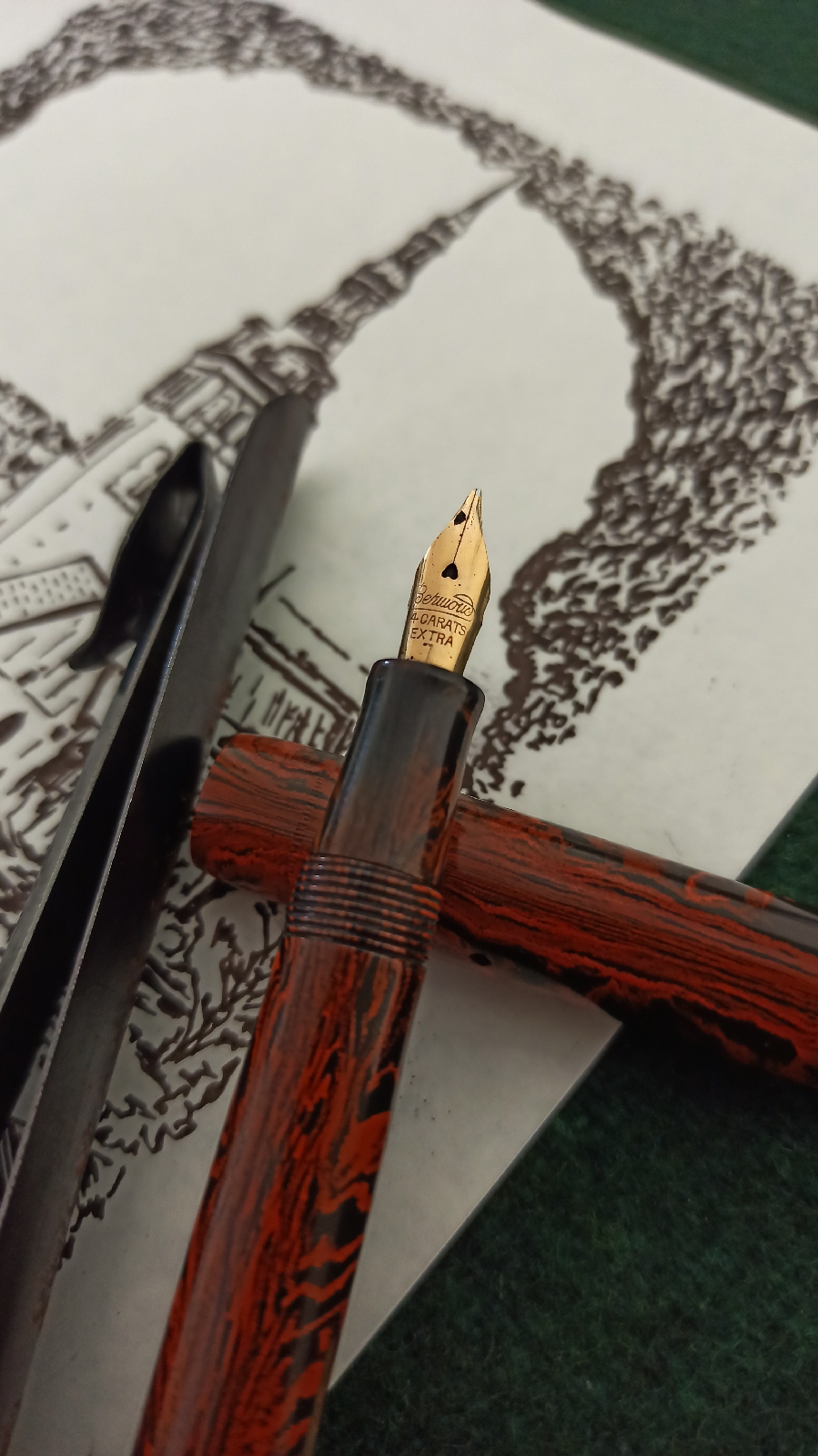working title
whyever not?
Thursday, July 20, 2023
French Bermond with a metal pocket
Tuesday, October 26, 2021
The Soyuz "Moskva" fountain pen
This is the "Moskva" fountain pen, made in the Leningrad (St. Petersburg) Soyuz factory in the erstwhile USSR, one of very few fountain pen models that came with gold nibs. These were meant for high ranking party and government officials. The shape is clearly an inspiration from the well-known Parker '51' of that time. The cap is a push- or friction fit similar to the '51' and has a somewhat similar aerometric filling system, an accordion filler that I have seen in French-made pens from the 1950s. A blind cap hides a transparent button that is repeatedly pushed to draw ink which can then be visible by tilting the pen around.
The most unique feature is obviously the cap, which unfortunately has a few dents. The clip has the factory name and logo: Soyuz with a 'C' within a horizontal diamond shape. There is an elaborate overlay of the Kremlin on the side crowned with a ruby-like stone inside a star. The building walls surround the cap lip giving it a very unique look. The cap jewel is a 'jewel' a decorative stone that looks like a ruby. I have heard that it was said to be an actual ruby, which I dont' find too believable, given the size of the stone.
The pen barrel itself is plastic. It was heavily scratched when I received it many months ago, waiting to be polished, which was only done this weekend.
The gold nib has a date stamp of 69 on the centre below the diamond shaped factory logo. There is an inversed 3 (the letter E in Cyrillic, I'm told) enclosed in a circle, with the number 6 below it, on one side. The other side has a purity mark that is barely legible: A rectangle which encloses what looks like a hammer and sickle within a star with the numbers 583 next to it. The nib itself is springy and seems to have a bit of flex. The hooded nib prevents the nib from flexing once in place. The nib is soft and smooth to write (dip tested only). The accordion sac, tested with water, works perfectly and has not hardened at all but it needs to be cleaned thoroughly inside.
An interesting bit of Soviet history.
There are a couple more examples of Soviet Russian fountain pens which I will post about soon.
Saturday, April 03, 2021
Unnamed European vintage pens with DOM nibs
"...vintage DOM fountain pen from Germany. DOM were a small German affair from the town of Cologne concerned in the manufacture of fountain pens. More widely known local manufacturers such as Soennecken located in nearby Bonn crowded out the likes of DOM, who were forced to finally close shop by the end of WW2."























